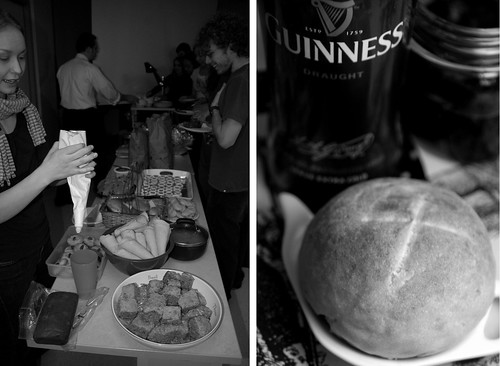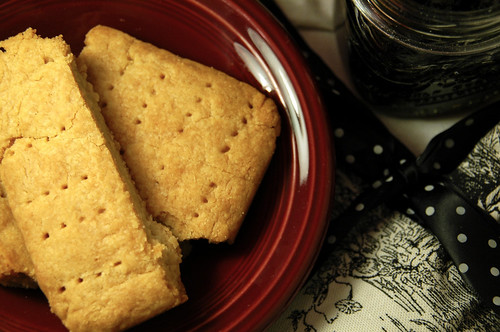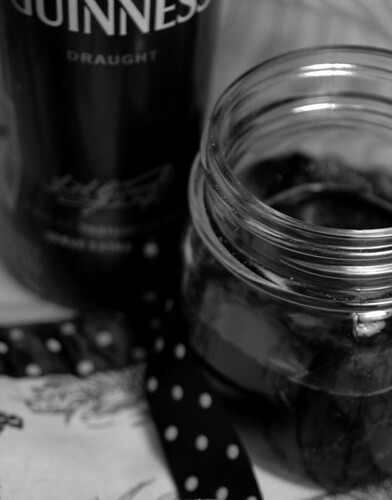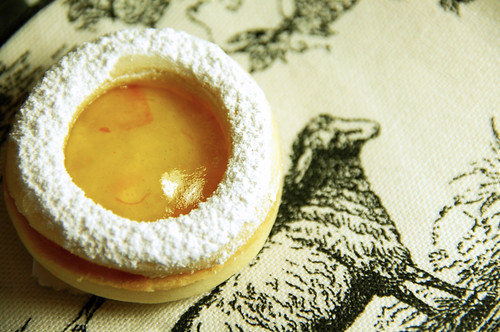 On the first day of history 335: coming to America, a course chronologizing in finite percental detail, the threads that comprise the historical tapestry of this colorfully peopled nation, Dr. Irish mentioned, though perhaps only on a whim, that "every year i think of how great it would be if we could have a day of study of immigrant culinary traditions where tasting would be of the utmost necessity...if only there was someone to organize it." If only indeed. One word was all it took, and I knew there was a story waiting. Every year it fails to materialize? Well you've never had this loco in the class before. On y va.
On the first day of history 335: coming to America, a course chronologizing in finite percental detail, the threads that comprise the historical tapestry of this colorfully peopled nation, Dr. Irish mentioned, though perhaps only on a whim, that "every year i think of how great it would be if we could have a day of study of immigrant culinary traditions where tasting would be of the utmost necessity...if only there was someone to organize it." If only indeed. One word was all it took, and I knew there was a story waiting. Every year it fails to materialize? Well you've never had this loco in the class before. On y va.With cookbooks tucked under the crook of my arm, i knocked on the door of professor Irish's office, do you have a minute? -of course. alright well you are going to think i'm crazy, -that's ok i already do. thanks, but i have here my plans for the immigration food day. -the what? really? you did? I hand him the menu; myriad ethnic dishes carefully chosen based on percentages representative of immigrant group's numerical significance as well as weight of cultural impact. For example, three possibilities for Ireland, three for Eastern Europe, two for Germany, one for Norway, three for Mexico, three for China, two for Japan, etc. until the class count of twenty seven was reached. Each possible food item not only represented a culinary national tradition, but was one that actually made it into America. To accomplish this seemingly subjective stunt, all recipes came from Greg Patent's A Baker's Odyssey (on recommendation from my favorite French immigrant, Helen...I suppose today the word is expat) as well as other relevant texts and novels. So what do you think? I ask as I hand him the documents. Holy crap...you are crazy.
 Standing in front of the class announcing the process, I know the eyes upon me gleam the same notion: yep it's official, she's the crazy one, as i announce, because I am project dictator, you will have a list of recipes to choose from that will then be distributed to you. If you are scared of baking--you can come bake in my kitchen and i'll help you. The sign up sheet is passed around with the menu of possible choices to prepare--unfortunately Guinness and vodka had to be removed as Dr. Irish reminded us, you know very well that only the Jesuits are allowed to drink in the classrooms. did I just get you fired? oops-- accompanying the list was a prosaic blurb outlying why we were doing this:
Standing in front of the class announcing the process, I know the eyes upon me gleam the same notion: yep it's official, she's the crazy one, as i announce, because I am project dictator, you will have a list of recipes to choose from that will then be distributed to you. If you are scared of baking--you can come bake in my kitchen and i'll help you. The sign up sheet is passed around with the menu of possible choices to prepare--unfortunately Guinness and vodka had to be removed as Dr. Irish reminded us, you know very well that only the Jesuits are allowed to drink in the classrooms. did I just get you fired? oops-- accompanying the list was a prosaic blurb outlying why we were doing this:Food is one one of the most crucial forms of cultural preservation—yet it is unique for it's elasticity in that it is simultaneously a form of cultural conglomeration. Language divides, appearance divides, religious beliefs divide, but when has cake ever divided? As a world we eat each others food, and as a world we yet maintain our own. The American language is naught but English, but the American table is spread with hundreds of dialects represented by plates of spaghetti, tacos, rice, coffee cakes, sausages, teas, pastries, liquors, etc. Food is a lens to view history, nothing edible exists without a story.
Under each ethnicity is listed a selection of recipes to choose from, the number in bold signifies the number of people allowed to choose from each category. The fun asterisk * denote the recipe's (according to me) basic difficulty. Note: proportionality is based on volume of persons actually immigrated, amount of time spent discussing a particular group in class, and overall weight of influence on American gastronomic culture.
 My contribution, after much wrestling against the wish to do my preferred cuisines and pastries (France, Portugal, and my favorite tapioca-rich dreamland to the south unfortunately are not primary nations from whence the migratory masses emerged) therefore as the instigator of this shenanigan, i decided to go with the first immigrants--no not the Norse and Portuguese cod fishermen who didn't stay--but with whom we owe our frustrating yet (as a writer) majestic language to; the United Kingdom. Since no Jesuits are enrolled in the class, to import the Guinness meant to bake it--so to tribute the Union Jack, Guinness potato yeast bread for St. Patrick's Cross, Scottish shortbread for that of St. Andrew's, and orange marmalade jammie dodgers for St. George's. Yes, a bloody arsenal of baked goods; i was up to my elbows in flour for hours. excellent, one of my many cabbage patches.
My contribution, after much wrestling against the wish to do my preferred cuisines and pastries (France, Portugal, and my favorite tapioca-rich dreamland to the south unfortunately are not primary nations from whence the migratory masses emerged) therefore as the instigator of this shenanigan, i decided to go with the first immigrants--no not the Norse and Portuguese cod fishermen who didn't stay--but with whom we owe our frustrating yet (as a writer) majestic language to; the United Kingdom. Since no Jesuits are enrolled in the class, to import the Guinness meant to bake it--so to tribute the Union Jack, Guinness potato yeast bread for St. Patrick's Cross, Scottish shortbread for that of St. Andrew's, and orange marmalade jammie dodgers for St. George's. Yes, a bloody arsenal of baked goods; i was up to my elbows in flour for hours. excellent, one of my many cabbage patches. The date was set for the final class period, and the result? The result was our first immigration food history day--miso soup, Norwegian krumkakar, tortillas, Polish sausages, bratwurst, Irish soda bread, Chinese almond cookies, bread puddings, Pennsylvania Dutch cake, challah, cinnamon rolls, minestrone, Cornish pasties, Borschendal pudding (African bread pudding), and many other delicacies. My classmates cooked, baked, made food--perhaps some for the first time, success! The culmination of a semester of study by experiencing something tangible: this food exists in our American culture today, illustrating that it is food, as much as language, dress, and religion that preserves and makes visible our historical makeup.
The date was set for the final class period, and the result? The result was our first immigration food history day--miso soup, Norwegian krumkakar, tortillas, Polish sausages, bratwurst, Irish soda bread, Chinese almond cookies, bread puddings, Pennsylvania Dutch cake, challah, cinnamon rolls, minestrone, Cornish pasties, Borschendal pudding (African bread pudding), and many other delicacies. My classmates cooked, baked, made food--perhaps some for the first time, success! The culmination of a semester of study by experiencing something tangible: this food exists in our American culture today, illustrating that it is food, as much as language, dress, and religion that preserves and makes visible our historical makeup.Guinness Potato Bread:
ingredients: ~4.75 cups bread flour ~ 3 mashed russet potatoes ~ 0.5 cup luke warm Guinness ~ 7 grams (1 packet) yeast ~ 2 tsps salt ~ 2 tbsps olive oil
method: 1- dissolve (completely) yeast in the Guinness (mmm smell good don't it?) 2-mix with potatoes, oil, and salt 3-gradually add all of the flour. 4- kneed until smooth, then cover for half an hour to rise. 5-roll out, either into two large rounds, or into 16 rolls and place on a floured towel, cover and let rise for 20 more minutes. 6- bake until they are done.
 note: Jammie Dodgers are not linzer cookies--as there is no almond flour used, instead the cookie is more of a basic biscuit shortbread (you know how the British are with their biscuits, the French too for that matter, but only with a bit of chocolate)
note: Jammie Dodgers are not linzer cookies--as there is no almond flour used, instead the cookie is more of a basic biscuit shortbread (you know how the British are with their biscuits, the French too for that matter, but only with a bit of chocolate)Jammie Dodgers
ingredients: 2 cups (260 gr) flour ~ 1/4 tsp (2 grams) salt ~ 2 sticks unsalted butter ~ 1/2 cup (60 grams) powdered sugar ~ 1 tsp vanilla extract
method: 1) cream butter and sugar--if you don't have mixer (cough, college students) don't be afraid to whisk by hand, i do--just make sure it's room temp butter, and not melted 2) add vanilla 3) mix the dry things in another bowl 4) combine butter/sugar with dry mix 5) roll dough into a log or two, wrap in plastic wrap, and refrigerate for one hour OR MORE 6) roll out dough flat (sprinkle everything with flour) and using a cookie cutter (or jam jar lid, bottle cap, something round, cut circles of all the dough, then using a smaller circle (soda top works) cut out smaller circles in half to make the tops 7) line a baking sheet with parchment and bake ~ 5-8 minutes or until they look done at 350 degrees. 8) cool, then sandwich with jam, ganache, whathave you--but first dust cookie tops with pwdered sugar.
A room full of chefs--stuffed college students on their final class day before the dread of the impending finals week, perhaps immigration in their minds has been made a little sweeter. Maybe food day is just a coy plot to distract a lesson and stuff our faces, but is it mere coincidence that all memories have somewhere embedded within a description of food? In the Godfather do we not always remember to take the canolis? At the end of the course Dr. Irish exclaimed, how will we do this next year? you will have to come back! Spokane next December? Not a chance--next December, perhaps next December I will be baking as an immigrant myself.
à bientôt



9 comments:
Wow. I mean, wow. And now let me pick my jaw up from the floor. There is no way how my humble prose could match up to yours. Such sophisticated, eloquent and well-informed piece could easily make it to a food publication.
Yes, you are crazy, but a lovable crazy. Maybe that's why we get along. And when you wrote 'project dictator' I thought for a split of a second: Had she really meant to write 'project director' but got mixed up? But I guessed not, haha!
Good job on your little pet project!! You have extended your influence to indoctrinate your whole class into cooking and baking---next is to launch your plans for world dominion, one food at a time!!
PS. Instead of Tibet, how does Melbourne sounds? Or are we not exotic enough for you, eh?
PPS. Love that first shot!!
If you'd be a dish yourself, you'd be a Paella... rich in flavours, delicate and strong at the same time, containing the sea, the fields and the farms in it... complicated but so true! And of course, gluten free!!!
You have done a wonderful job, Mallory :D
No St. David then?
who's St. David?
Very impressive. What a great idea this was to organize this for your class. Sounds like it was a great success!
hello crazy one! this makes me miss history classes, exam week, and everything about college. hopefully i get a job in a school that allows students to let their culinary imaginations run wild!
Hi Mallory!!! It's me, Elaine, the Brazilian girl living in AZ.
How are you? I know I 've been lacking on the visits to your blog, I am sorry. I am just done with my finals this semester, so I will have about a month off from school, and hopefully have some time to read everybody's blogs, and say hi.
I was curious to know how your "brazilian story" is going. You can send me an email if you want.
I hope eveything is going well for you. Your blog always looks yummy!!!!
haha :)
Beijos
Elaine
Wow..just wow! My hat's off to you sweetie for such an amazing job! I hope that secured you an A+ for the entirety of next year!
Glad I was able to help :)
Beautifully written - and some very good bread as well. I made two good-sized oval loaves & had to guess at time & temperature to bake them - ended up about 30 minutes at 375 and they are crusty but moist inside & make excellent toast. I'll definitely make this recipe again, so thank you!
Post a Comment